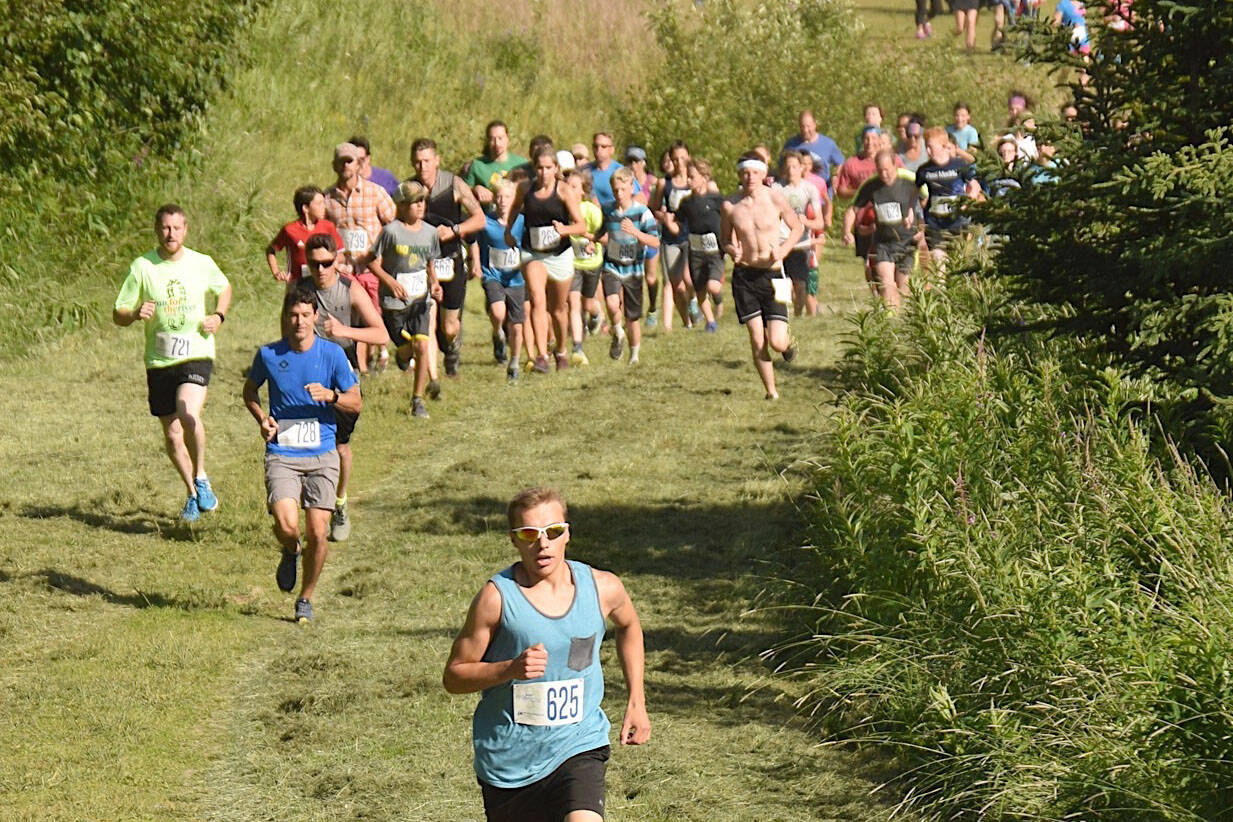During the pandemic, I questioned the value of regular community racing and the numbers show I wasn’t the only one.
The five-race Salmon Run Series at Tsalteshi Trails averaged 45 runners per week this year and in 2021, compared to 84 runners per week in 2019. Covering many community running and biking events as the sports editor for the Clarion, I’ve seen that decline across the board.
Before the pandemic, I was a regular community racer. My relationship with fitness changed at the outset of the pandemic in March 2020. My work and life stress increased exponentially and my runs and bike rides were desperate escapes that eventually led to multiple nagging injuries.
By the fall of 2020, I finally figured out what should seem obvious — a workout is a stress on the body. Workout stress and other life stress all goes in the same bucket.
If there is additional stress elsewhere in life, it’s best to back off on the stress created by a workout in order to keep the stress bucket from overflowing with pain and malfunction.
What resulted from this realization was the most injury-free period I’ve had since my early 20s. If life got really stressful, I’d just go for a flat, 2-mile run on pavement at paces as slow as 13 minutes per mile and call it good.
Since arriving on the central peninsula in 1997, I’d always had to stop running at Tsalteshi Trails at some point in the summer because the sharp hills and wavy ground would have me too beat up to continue. In 2021, I was able to run the whole summer and fall at Tsalteshi for the first time.
It was bliss, but I also had eliminated another stress in my life — racing against other people. Part of me wanted to stay safe and never go back to racing; another part of me is a journalist who marvels at the tales that are spun by the magic of athletes competing against one another.
In February’s Tour of Tsalteshi cross-country ski race, I felt the thrill of a race for the first time since March 2020, but a moose blocking the course quickly shut that off.
Then came Homer’s Kachemak Ski Marathon in March. I became fixated on keeping up with a racer in front of me. I was pushing to the edge, and a bit over. It was everything I loved about racing, until I took a corner too fast and partially separated my shoulder.
Did I really need this?
I decided to give racing another chance at this summer’s Salmon Run Series in what would be my first running race with people since the pandemic. I would run hard, but also run with the knowledge that I’m now 47 and face consequences if I throw caution to the wind.
I ran the July 6 5K in 25 minutes, 37 seconds. I didn’t injure myself. I was sharing outdoor activity with the good people of the running community for the first time in years.
It all felt so good, until I looked at my Strava account and saw I’d run the same course in 21:38 in 2018. It made me feel as old as when I discuss Nirvana with one of my colleagues in her 20s and she says, “My parents say the same thing.”
Really, did I need this?
In my life to this point, when I had gotten slower, there was always an easy fix. I could stop drinking so much alcohol. I could stop eating so much junk food. I could start exercising regularly again.
There was no such easy fix this time. My diet is on point, I exercise regularly and my beer consumption is a shame to my Wisconsin homeland. All I could do was keep gradually adding speed to my runs, stay healthy and hope things improved.
In the fifth and final Salmon Run Series, held on the same course as the July 6 course, I was able to improve my time by 55 seconds. That’s a long way off by 2018 self, but also better than my July 6 self.
The best coaches I’ve covered over the years have always emphasized a focus on self-improvement over concern about the competition. The only race that’s really fair is the race against yourself.
Thanks to the pandemic, I had no idea who that self was anymore. I’m glad to be racing him again.


